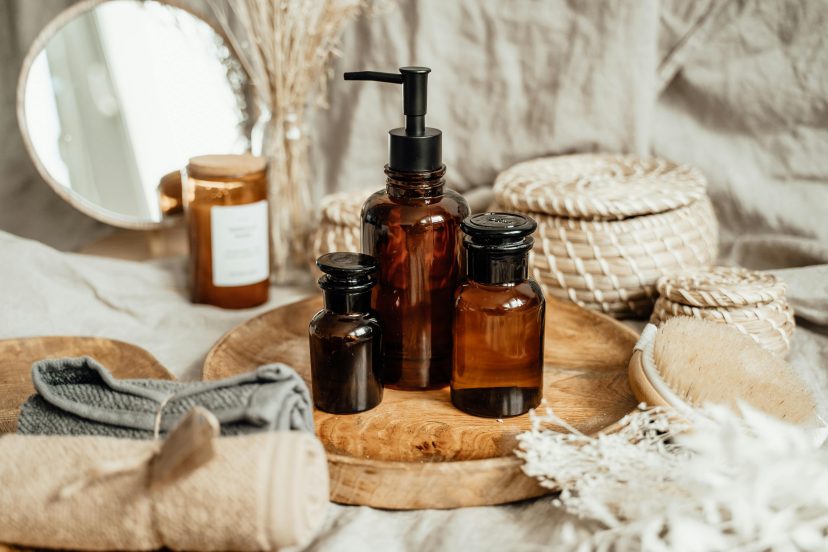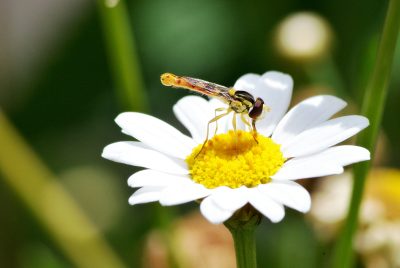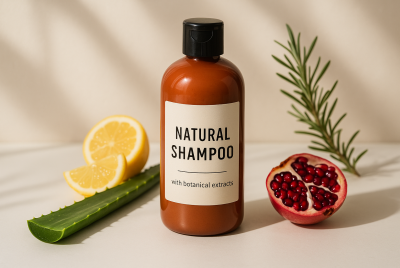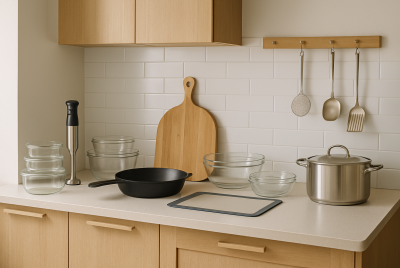5 DIY Air Freshener Ideas That Don’t Pollute Your Air
We may earn a commission for purchases made using our links. Please see our disclosure to learn more.
Most people want their homes to smell clean and welcoming, but what if your favorite air freshener is actually polluting your air? That’s the problem with many store-bought products—they’re packed with synthetic chemicals and artificial fragrances that can trigger allergies, irritate your lungs, and compromise your health. It’s frustrating to think that something meant to freshen your space could be doing the opposite. Fortunately, there’s a safer, simpler way. Homemade air fresheners made from natural ingredients let you control exactly what goes into your air. This guide shares five easy, non-toxic DIY air freshener recipes that smell amazing, support your well-being, and help you create a healthier home—without the hidden risks.
Why Ditch Commercial Air Fresheners?
It’s easy to assume that if it smells good, it’s safe. Unfortunately, that’s far from the truth when it comes to conventional air fresheners.
According to the Environmental Working Group (EWG), many popular brands contain harmful substances like formaldehyde, phthalates, and volatile organic compounds (VOCs). These chemicals can irritate the lungs, trigger allergies, and even interfere with hormone function. Worse, companies aren’t legally required to disclose all their fragrance ingredients, making it hard to know what you’re really breathing in.
One peer-reviewed study led by Dr. Anne Steinemann revealed that many fragranced products—including air fresheners—emit numerous VOCs classified as toxic or hazardous, with some not listed on any label or safety sheet. This lack of transparency poses a major health risk, especially in enclosed indoor spaces.
Additionally, a study published in Environmental Health Perspectives found that indoor air pollution can exceed outdoor pollution due to sources like scented candles, aerosols, and plug-in fresheners. These everyday products, often marketed as clean or safe, can actually release ultra-fine particles that penetrate deep into the lungs.
When you use a DIY air freshener instead, you avoid these risks. You choose the ingredients, control the scent, and eliminate exposure to harmful additives—making your home safer and more breathable.
Supplies to Get Started
Before we get into the DIY air freshener recipes, let’s talk about the basic tools and ingredients you’ll want on hand. These essentials can be used across all five methods and are easy to find online.
Recommended Items:
| Item | Description |
| Amber Glass Spray Bottles (2-pack) | Reusable bottles that protect essential oils from sunlight and degradation |
| Plant Therapy Essential Oils Set | Includes lavender, lemon, peppermint, eucalyptus, and more |
| Organic Witch Hazel | Helps disperse essential oils evenly in water-based sprays |
| Baking Soda | A natural deodorizer that neutralizes odors |
| Cotton or Muslin Bags | Ideal for sachets you can place in drawers, closets, or cars |
Once you’ve gathered your tools, it’s time to get creative.
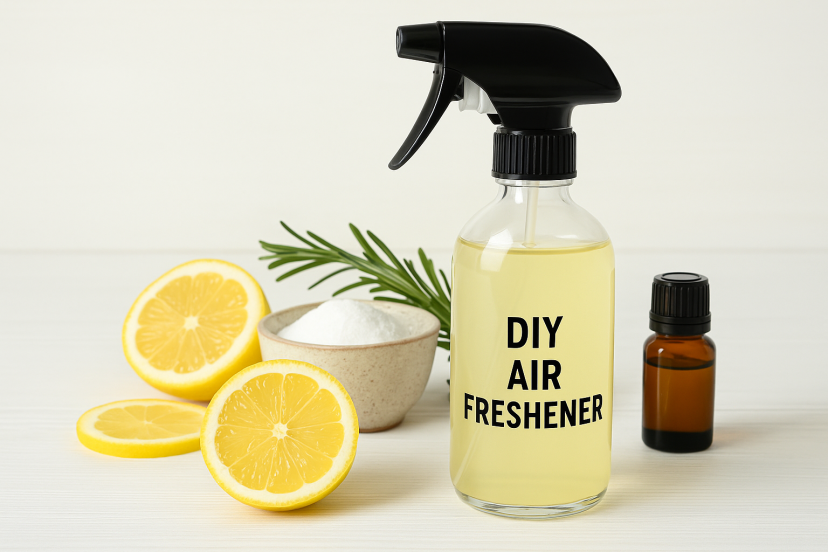
1. Simmer Pot: A Stovetop Scent Solution
A simmer pot is one of the easiest ways to fill your home with fragrance using natural ingredients. It’s especially nice during cooler months when you’re already in the kitchen.
Ingredients:
- 1 sliced orange or lemon
- 2–3 cinnamon sticks
- A few sprigs of rosemary or fresh mint
- 1 tsp vanilla extract
- 2 cups water
Instructions:
Add all the ingredients to a pot and bring it to a gentle simmer. As the water evaporates, it releases a pleasant, soothing aroma into the air. Refill with water occasionally to maintain the fragrance throughout the day.
This method is zero-waste and uses items you likely already have. For a more floral vibe, swap the citrus for rose petals or dried lavender.
Backed by Science:
Citrus and rosemary scents have been shown to reduce cortisol levels and boost mental clarity, according to research from the Journal of Agricultural and Food Chemistry.
2. Essential Oil Room Spray
A homemade room spray is a staple in any natural living toolkit. It’s versatile, easy to make, and customizable to fit any mood or season.
Ingredients:
- ½ cup distilled water
- Use 2 tablespoons of either witch hazel or high-proof alcohol.
- 15–20 drops of essential oil (lavender, lemon, peppermint, eucalyptus)
Instructions:
Pour all ingredients into a spray bottle and mix thoroughly. Shake well before each use and spray around your home, on fabrics, or in the bathroom.
Lavender and peppermint make a relaxing bedtime blend, while lemon and eucalyptus give a clean, energizing feel. You can also explore blends with sweet orange, cedarwood, or ylang ylang depending on your scent preference.
For best results, use a dark amber glass spray bottle to prevent sunlight from degrading the oils.
3. Baking Soda Jar Air Freshener
This low-maintenance option is perfect for tucked-away spaces like closets, laundry rooms, or under the sink. Baking soda neutralizes odors while essential oils provide a fresh, lasting scent.
Ingredients:
- ½ cup baking soda
- 15–20 drops essential oil
- Mason jar with perforated lid or foil cover with holes
Instructions:
Place baking soda and essential oils in the jar, shake to combine, and secure the lid. Set the jar in a discreet location and enjoy weeks of fresh air. Refresh the scent by stirring or adding a few more drops of oil every week or two.
This method works especially well with odor-fighting oils like tea tree, lemon, or eucalyptus.
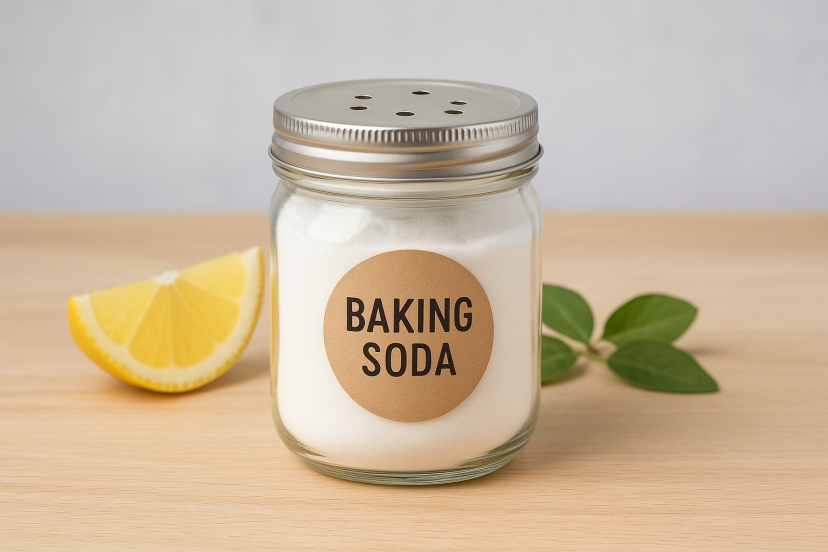
4. Gel Air Fresheners
If you want something decorative and functional, gel air fresheners are a fun weekend project. They look great on desks or bathroom counters and hold their scent for several weeks.
Ingredients:
- 1 cup water
- 1 packet unflavored gelatin
- 1 tablespoon salt
- 20–30 drops essential oil
- Food coloring (optional)
- Heatproof jars or containers
Instructions:
Heat ¾ cup water until hot, then stir in the gelatin until fully dissolved. Stir in salt, essential oils, and food coloring if using, then transfer the mixture to jars and allow it to cool and set. Once set, they’ll start releasing scent into the air gradually.
To avoid mold, always include the salt and use a sterilized container. These can be placed in bedrooms, entryways, or anywhere that needs a scent boost.
5. Natural Drawer Sachets
Forget synthetic drawer liners or dryer sheets. These DIY sachets offer a clean, natural alternative and can be tucked into clothing drawers, gym bags, shoes, or closets.
Ingredients:
- Dried lavender, rose petals, or cedar shavings
- A few drops essential oil
- Small fabric bags (muslin, cotton, or organza)
Instructions:
Fill the bag with your dried ingredients and add a few drops of essential oil. Seal the bag and place it wherever you want a fresh scent.
Lavender is a favorite for drawers, as it also deters moths. Cedar chips are great for closets and work boots, helping absorb moisture and keep things smelling clean.
Pro Tips for Long-Lasting Natural Scents
- Rotate Oils: Your sense of smell adapts over time. Switching up oils keeps scents effective and enjoyable.
- Use High-Quality Oils: Look for pure, therapeutic-grade oils to get the best results.
- Mind Pets and Kids: Some oils, like tea tree and citrus, can be irritating to pets. Always research oil safety if you share your home with furry friends.
- Test First: Spritz fabrics in an inconspicuous spot first to make sure there’s no discoloration or staining.
Looking for a Signature Scent?
If you love warm, inviting aromas—like cinnamon, clove, or vanilla—consider creating a scent corner in your kitchen. Pair your DIY air fresheners with a beautifully organized setup using a coffee syrup organizer. It’s a great way to store oils, sprays, and even your favorite candles, all in one convenient space.
Final Thoughts
Making your own air fresheners is a simple way to improve indoor air quality without exposing yourself to harmful chemicals. Whether you prefer sprays, sachets, or simmer pots, each DIY air freshener method gives you control over your space and scent. Plus, it’s a more sustainable choice that supports a healthier home environment. For more eco-friendly ideas to upgrade your living space, check out our guide on sustainable container homes.
FAQs
1. Are DIY air fresheners safe for children and pets?
While many oils are generally safe, it’s crucial to research each one—especially if you have young children or pets. Steer clear of potent oils like eucalyptus, peppermint, and tea tree in sensitive environments. Always ventilate well and use oils sparingly.
2. How long will a DIY air freshener spray stay effective?
When stored in a dark glass bottle in a cool place, your spray can last up to one month. Give the bottle a good shake before each use, since the oils naturally separate from the liquid.
3. Can I reuse the ingredients in simmer pots?
Yes, you can reuse them for a day or two. Just store them in the fridge between uses and top up the water when simmering again.
4. Is there a zero-waste way to make air fresheners?
Absolutely. You can use citrus peels, old herbs, and recycled containers to reduce waste. Sachets can be refilled and reused indefinitely.
5. Do natural air fresheners actually remove odors?
They can. Baking soda neutralizes odor molecules, and many essential oils have antibacterial properties that help reduce the source of smells—not just mask them.

